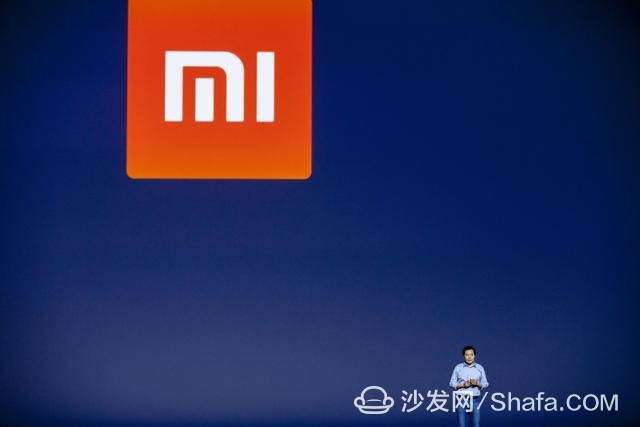
On November 24, Xiaomi Chairman and CEO Lei Jun announced a major internal restructuring via an internal letter addressed to all employees. The announcement marked a significant shift in leadership roles, with key figures such as Lei Jun, Lin Bin, and Li Wanqiang taking on new responsibilities. Several young executives, known as the "Zhao Zhuangpai" generation, were also promoted, signaling a strategic move toward fresh leadership and innovation within the company.
In his letter, Lei Jun revealed that he would now directly oversee R&D and supply chain operations, while Lin Bin would take on the role of President of Xiaomi Technology and General Manager of the Mobile Phone Department. This change suggests that after nearly 18 months, Lei Jun is preparing to hand over the mobile phone business to Lin Bin, who has been a key figure in Xiaomi's growth.
Lei Jun emphasized that the organizational adjustments are aimed at enhancing collaboration across the company and driving it to a higher level of performance. He noted that after two years of refining management practices, Xiaomi achieved its annual sales target of 100 billion yuan ahead of schedule in October. This success reflects the progress made since Lei Jun took over from Zhou Guangping in May 2016, a period during which Xiaomi faced challenges, including not meeting its 80 million unit sales goal in 2015.
Since then, Xiaomi has seen a remarkable turnaround. In the third quarter of this year, global smartphone shipments reached 27.6 million units, marking a return to the top five in the industry with a 102.6% growth rate. In India, Xiaomi maintained a strong position with a 23.5% market share, securing the number one spot.
The shift in leadership indicates that Lei Jun is focusing more on long-term strategies and broader initiatives, allowing Lin Bin to manage core operations. According to an insider, this move represents a relief for Lei Jun, who can now focus on other critical aspects of the business.
Meanwhile, Lin Bin’s previous focus on the Mi business will now be managed by Wang Lingming, who was recently appointed Vice President and General Manager of the Sales and Service Department. Wang brings valuable experience in supply chain, marketing, and retail, making him a strategic fit for Xiaomi’s evolving retail model.
Wang Lingming, who joined Xiaomi earlier this year, previously worked at Tianyu Mobile and the Phone World Group. His background aligns with Xiaomi’s new retail strategy, emphasizing channel development and customer engagement.
Another key figure, Li Wanqiang, will transition into a brand strategy role, working alongside Heshun Capital Partners. He will also continue to mentor Liang Feng, a senior marketing executive who has played a crucial role in Xiaomi’s marketing efforts.
Wang Lingming and Liang Feng, both under 35, represent the younger "Zhao Zhuangpai" generation, who are being groomed for leadership roles. Their direct reporting to Lei Jun highlights the company’s focus on talent development and succession planning.
Additionally, several senior vice presidents, including Hong Feng, Liu De, Wang Chuan, and Yan Yan, were added to the leadership team. These individuals, who are among Xiaomi’s co-founders, now hold key positions in areas such as MIUI, ecosystem development, smart TV and box operations, and public affairs.
This restructuring underscores Xiaomi’s commitment to adapting and growing in a competitive market, ensuring a smooth transition of power and continued innovation. For more information on smart TVs and media boxes, visit Smart TV/box information (http://), a leading platform providing insights into smart TV technology, software, and related services.
Speaker
Speakers are one of the most common output devices used with computer systems. Some speakers are designed to work
specifically with computers, while others can be hooked up to any type
of sound system. Regardless of their design, the purpose of speakers is
to produce audio output that can be heard by the listener.
Speakers are transducers that convert electromagnetic waves into sound waves. The speakers receive audio input from a device such as a computer or an audio receiver. This input may be either in analog or digital form. Analog speakers simply amplify the analog electromagnetic waves
into sound waves. Since sound waves are produced in analog form,
digital speakers must first convert the digital input to an analog
signal, then generate the sound waves.
The sound produced by speakers is defined by frequency and amplitude.
The frequency determines how high or low the pitch of the sound is. For
example, a soprano singer's voice produces high frequency sound waves,
while a bass guitar or kick drum generates sounds in the low frequency
range. A speaker system's ability to accurately reproduce sound
frequencies is a good indicator of how clear the audio will be. Many
speakers include multiple speaker cones for different frequency ranges,
which helps produce more accurate sounds for each range. Two-way
speakers typically have a tweeter and a mid-range speaker, while
three-way speakers have a tweeter, mid-range speaker, and subwoofer.
Speaker System,Magnet Speaker Acoustic,Moving Coil Loudspeaker,Metal Frame Mylar Speaker
Jiangsu Huawha Electronices Co.,Ltd , https://www.hnbuzzer.com

